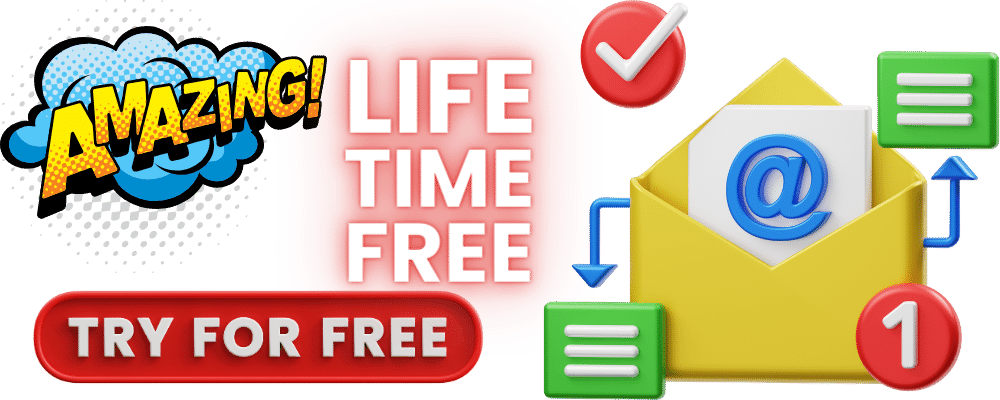How to Anlalyse Sales Funnel

Learn Digital Skills to Create Digital Assets for Multiple Sources of Income, Attend FREE Masterclass – Click HERE
CHAPTER 1 – Introduction: Understanding the Importance of Sales Funnel Analysis
In today’s competitive business landscape, understanding the concept of sales funnels and analyzing them has become crucial for achieving success. A sales funnel represents the journey that a potential customer goes through from initial awareness to making a purchase. By analyzing each stage of this funnel, businesses gain valuable insights into their marketing strategies and can identify areas for improvement.
The first stage of a sales funnel is called the awareness stage. This is when potential customers become aware of your brand or product through various marketing channels such as advertising, social media, or word-of-mouth. Analyzing this stage helps businesses evaluate the effectiveness of their marketing efforts in creating brand awareness and attracting potential customers.
Moving down the funnel, we reach the second stage known as interest or consideration. At this point, potential customers have shown interest in your product or service and are actively considering it as a solution to their needs. Analyzing this stage allows businesses to understand customer behavior and preferences better, helping them tailor their marketing messages to resonate with their target audience.
The next stage is decision-making, where potential customers are evaluating different options and deciding whether to make a purchase. Analyzing this stage provides insights into what factors influence customer decisions and helps businesses optimize their pricing strategies, product positioning, and competitive advantages.
Finally, we reach the last stage of the sales funnel – action or conversion. This is when a potential customer takes the desired action, such as making a purchase or signing up for a service. By analyzing this final stage, businesses can identify any barriers that may prevent conversions and make necessary improvements to increase conversion rates.
To effectively analyze sales funnels, it is important to track and measure key metrics throughout each stage. These metrics provide quantifiable data that can be used to evaluate performance and make informed decisions about optimization strategies.
Some key metrics that should be tracked include:
1) Traffic sources: Understanding where your website visitors are coming from helps identify the most effective marketing channels and allocate resources accordingly.
2) Conversion rates: Measuring the percentage of potential customers who take the desired action allows businesses to identify areas for improvement and optimize their conversion funnels.
3) Average order value: Analyzing the average value of each purchase helps businesses identify opportunities to increase revenue, such as upselling or cross-selling.
4) Customer acquisition cost: Tracking how much it costs to acquire a new customer compared to their lifetime value helps businesses evaluate the effectiveness of their marketing campaigns and make informed decisions about resource allocation.
To gather this data, various tools and techniques can be utilized. Web analytics platforms like Google Analytics provide valuable insights into website traffic, user behavior, and conversion rates. Customer relationship management (CRM) systems help track customer interactions throughout the sales funnel. Surveys, interviews, and focus groups can also provide qualitative data that complements quantitative metrics.
Once you have collected data on key metrics, it is important to interpret and analyze the information gathered. This involves identifying patterns, correlations, or anomalies that may require further investigation. For example, if you notice a sudden drop in conversion rates at a specific stage of the funnel, it could indicate a problem that needs attention.
By understanding these metrics and analyzing them thoroughly, businesses can make data-driven decisions to optimize their sales funnels. This leads to increased conversions, higher customer satisfaction levels, and ultimately more revenue for the business.
Analyzing sales funnels is essential for businesses seeking success in today’s competitive market. By understanding each stage of the funnel and tracking key metrics at each step along with gathering customer data through various tools and techniques; businesses can gain valuable insights into customer behavior and preferences which will allow them to improve their marketing strategies accordingly.
In Chapter 2 – “Identifying Key Metrics: Tracking and Measuring Sales Funnel Performance,” we will delve deeper into identifying specific metrics that need to be tracked and measured, as well as explore the tools and techniques for gathering data effectively. This will provide businesses with a solid foundation for further analysis and optimization of their sales funnels.
CHAPTER 2 – Identifying Key Metrics: Tracking and Measuring Sales Funnel Performance
As we delve deeper into the world of sales funnel analysis, it becomes crucial to identify the key metrics that need to be tracked and measured in order to effectively analyze the performance of your sales funnel. By understanding these metrics, businesses can make data-driven decisions to optimize their sales funnels and achieve greater success.
Tracking and measuring the performance of a sales funnel involves gathering relevant data at each stage of the customer journey. This data provides valuable insights into how customers interact with your marketing efforts and where improvements can be made. Let’s explore some key metrics that should be considered when analyzing your sales funnel.
1. Traffic Sources:
One important metric to track is the source of traffic that leads visitors to your website or landing page. By understanding which channels are driving traffic, such as search engines, social media platforms, or referral websites, you can allocate resources more effectively and focus on optimizing those channels that generate high-quality leads.
2. Landing Page Conversion Rate:
The conversion rate of your landing page is a critical metric to measure. It indicates how successful your landing page is in capturing visitor’s attention and converting them into leads or customers. By analyzing this metric, you can identify areas for improvement in terms of design, messaging, or call-to-action buttons.
3. Lead Capture Rate:
Once visitors land on your website or landing page, it’s important to track how many of them actually provide their contact information through lead capture forms. This metric helps assess the effectiveness of your lead generation strategies and determine whether adjustments are needed to increase conversions.
4. Sales Conversion Rate:
The ultimate goal of any sales funnel is to convert leads into paying customers. Tracking the sales conversion rate allows you to evaluate how well you are guiding prospects through each stage towards making a purchase decision. By monitoring this metric closely, businesses can identify potential bottlenecks or areas where leads are dropping off, and take action to optimize the conversion process.
5. Average Order Value:
Understanding the average order value can provide valuable insights into the purchasing behavior of your customers. By analyzing this metric, you can identify opportunities for upselling or cross-selling to increase revenue per customer. Additionally, it helps in setting realistic sales targets and measuring the effectiveness of pricing strategies.
6. Customer Lifetime Value:
Customer lifetime value (CLV) is a metric that estimates the total revenue a customer is expected to generate throughout their relationship with your business. By calculating CLV, you can prioritize customer retention efforts and tailor marketing strategies to maximize long-term revenue from each customer.
To effectively track and measure these metrics, businesses need to utilize various tools and techniques for data collection and analysis. Web analytics platforms like Google Analytics provide valuable insights into website traffic sources, landing page performance, and conversion rates. CRM (Customer Relationship Management) software assists in tracking lead capture rates and sales conversion rates.
It’s important not just to collect data but also to interpret it correctly. Analyzing trends over time, comparing different marketing campaigns or channels, and segmenting data based on demographics or behavioral patterns are some approaches that help gain deeper insights from collected data.
Connecting these metrics with the overall goal of optimizing your sales funnel is essential for success in sales funnel analysis. By understanding which metrics are most relevant to your specific business goals, you can focus on improving those areas that will have the greatest impact on your bottom line.
Identifying key metrics for tracking and measuring sales funnel performance is crucial for analyzing its effectiveness. By understanding how visitors find your website or landing page, measuring conversion rates at each stage of the funnel, assessing average order value and customer lifetime value; businesses can make informed decisions on how to optimize their sales funnels for greater success.
The next chapter will delve into assessing conversion rates at each stage of the sales funnel further; exploring different methods for analyzing customer behavior and identifying potential bottlenecks or areas of improvement within the funnel. Stay tuned to discover how to fine-tune your sales funnel and increase your conversion rates!
CHAPTER 3 – Assessing Conversion Rates: Analyzing Customer Journey Through the Funnel
As we delve deeper into understanding the importance of sales funnel analysis, it becomes evident that assessing conversion rates at each stage of the funnel is crucial for optimizing marketing strategies. In this chapter, we will explore different methods for analyzing customer behavior and identifying potential bottlenecks or areas of improvement within the sales funnel. By understanding how customers move through the funnel, businesses can make data-driven decisions to increase conversions and maximize revenue.
The first step in assessing conversion rates is to establish a clear understanding of each stage within the sales funnel. Typically, a sales funnel consists of four main stages: awareness, interest, decision, and action. At each stage, customers exhibit specific behaviors and engage with different types of content or touchpoints.
To analyze customer behavior at each stage, businesses can leverage various analytical tools and techniques. One commonly used tool is website analytics software that tracks user interactions on a company’s website. By examining metrics such as page views, bounce rates, and time spent on pages, businesses can gain insights into how effectively they are engaging visitors at different stages of the funnel.
Another useful technique for analyzing customer behavior is cohort analysis. Cohort analysis involves grouping customers based on a shared characteristic or time frame and examining their behavior over a specific period. This allows businesses to identify patterns or trends in customer engagement and make targeted improvements.
When assessing conversion rates within the sales funnel, it’s essential to look beyond just the overall numbers. Businesses should also consider analyzing conversion rates for specific segments or personas within their target audience. This segmentation helps uncover valuable insights about which marketing strategies are most effective for different customer groups.
For example, let’s say a company sells skincare products targeting both men and women in different age groups. By analyzing conversion rates separately for these segments, they may discover that certain marketing messages resonate more strongly with one group over another. Armed with this knowledge, the company can tailor their marketing efforts to better address the unique needs and preferences of each segment.
Identifying potential bottlenecks or areas of improvement within the sales funnel is another crucial aspect of conversion rate analysis. Businesses should pay close attention to the drop-off rates at each stage and investigate why customers may be falling out of the funnel.
One effective method for identifying bottlenecks is through customer feedback surveys. By actively seeking feedback from customers who did not convert, businesses can gain valuable insights into what might have caused them to abandon their purchase journey. This feedback allows businesses to make informed decisions on how to optimize their sales funnel and remove any barriers preventing conversions.
Furthermore, businesses should closely monitor customer interactions with customer support channels such as live chat, email inquiries, or phone calls. Analyzing these interactions can provide valuable insights into common pain points or frequently asked questions that may be hindering conversions. By addressing these issues proactively, businesses can improve customer experience and increase conversion rates.
In summary, assessing conversion rates at each stage of the sales funnel is essential for optimizing marketing strategies and increasing conversions. By utilizing analytical tools and techniques, segmenting customers based on shared characteristics or time frames, and actively seeking customer feedback, businesses can uncover valuable insights that lead to data-driven improvements in their sales funnels. In doing so, they will enhance engagement with potential customers throughout the entire buyer’s journey and ultimately maximize revenue.
As we continue our journey through “How to Analyze Sales Funnel,” it becomes clear that understanding conversion rates is just one piece of the puzzle in optimizing sales funnels. In the next chapter, we will explore strategies for attracting quality leads within a sales funnel and discuss various techniques such as content marketing, social media advertising, email campaigns, etc., that help generate leads with higher chances of converting into paying customers. Stay tuned as we delve deeper into lead generation optimization!
Chapter 4: Optimizing Lead Generation – Strategies for Attracting Quality Leads
Introduction:
In the previous chapters, we have explored the importance of sales funnel analysis and identified key metrics to track and measure its performance. Now, we turn our attention to one of the most critical aspects of a successful sales funnel – lead generation. In this chapter, we will delve into various strategies for attracting quality leads and discuss how businesses can optimize their lead generation efforts to maximize conversions.
Understanding Lead Generation:
Before diving into strategies, let’s clarify what lead generation means within the context of a sales funnel. Lead generation refers to the process of capturing potential customers’ interest in your products or services and acquiring their contact information for further nurturing. It is crucial to attract quality leads who have a genuine interest in what your business offers.
Content Marketing:
One of the most effective strategies for attracting quality leads is through content marketing. This involves creating valuable and relevant content that addresses your target audience’s pain points or provides solutions to their problems. By consistently producing high-quality content through blog posts, videos, podcasts, or infographics, you can establish yourself as an authoritative source in your industry.
Social Media Advertising:
In today’s digital age, social media platforms offer immense opportunities for businesses to reach their target audience directly. Leveraging social media advertising allows you to create highly targeted campaigns based on demographics, interests, behavior patterns, and more. By utilizing platforms like Facebook Ads or LinkedIn Ads effectively, you can attract leads that are more likely to convert into customers.
Email Campaigns:
Email marketing remains one of the most powerful tools in a marketer’s arsenal when it comes to lead generation. Building an email list enables you to nurture relationships with potential customers over time by delivering personalized content directly into their inbox. Crafting compelling email campaigns that provide value and engage recipients can significantly increase conversion rates throughout the sales funnel.
Segmentation Strategies:
Not all leads are created equal – some may be more interested in a specific product or service your business offers, while others might be at an earlier stage of the buying process. Segmenting your leads based on their interests, behavior, or demographics allows you to tailor your marketing efforts accordingly. By delivering targeted messages to specific segments, you can increase relevance and engagement.
Lead Magnets:
To entice potential customers to provide their contact information, offering valuable incentives or lead magnets can be highly effective. Lead magnets can take various forms, such as e-books, whitepapers, free trials, webinars, or exclusive discounts. By offering something of value in exchange for contact information, you increase the chances of attracting quality leads who are genuinely interested in what you offer.
Optimization and Testing:
Optimizing lead generation strategies is an iterative process that requires continuous testing and improvement. A/B testing different elements within your campaigns – such as headlines, call-to-action buttons, landing pages – allows you to identify what resonates best with your target audience and fine-tune your approach accordingly. By embracing a culture of experimentation and data-driven decision-making, businesses can unlock significant improvements in lead generation performance.
Conclusion:
In this chapter on optimizing lead generation strategies within a sales funnel analysis framework, we have explored various techniques for attracting quality leads. From content marketing to social media advertising and email campaigns to segmentation strategies and lead magnets – each strategy plays a crucial role in capturing potential customers’ interest and nurturing them towards conversion.
By implementing these strategies effectively and continuously analyzing their performance through the lens of sales funnel analysis metrics discussed earlier in this book – businesses can drive higher conversion rates throughout their sales funnels. Remember that optimizing lead generation is not a one-time effort but an ongoing process that requires constant adaptation to changing market dynamics.
In the next chapter on nurturing prospects within the sales funnel, we will dive deeper into building relationships with potential customers by leveraging personalized communication strategies. Stay tuned for valuable insights on how to nurture prospects effectively and increase conversions within your sales funnel.
Learn Digital Skills to Create Digital Assets for Multiple Sources of Income, Attend FREE Masterclass – Click HERE
Chapter 5: Nurturing Prospects: Building Relationships and Increasing Conversions
Introduction:
In the previous chapters, we have explored the importance of sales funnel analysis and discussed various methods for tracking and measuring its performance. Now, it’s time to delve into the crucial aspect of nurturing prospects within the sales funnel. Building relationships with potential customers is essential for increasing conversions and maximizing revenue. In this chapter, we will explore effective strategies for nurturing prospects and guide you on how to implement them in your sales funnel optimization journey.
Understanding the Prospect Journey:
Before diving into specific strategies, it is important to understand the prospect journey through the sales funnel. A typical customer goes through several stages before making a purchase decision. These stages include awareness, interest, consideration, evaluation, and finally, conversion. Each stage requires a tailored approach to engage with prospects effectively.
Personalized Email Sequences:
One of the most effective strategies for nurturing prospects is through personalized email sequences. By segmenting leads based on their interests and behaviors gathered from earlier stages of the funnel analysis, you can send targeted emails that resonate with their needs.
Start by understanding your audience’s pain points and crafting emails that address those specific challenges. Provide valuable content such as informative articles or case studies that demonstrate how your product or service can solve their problems. Additionally, consider offering exclusive discounts or promotions to incentivize conversions.
Targeted Content Creation:
Another powerful strategy for building relationships with prospects is through targeted content creation. Create blog posts, videos, or social media content that resonate with your target audience’s interests and aligns with their pain points.
Focus on providing value rather than pushing for immediate sales. Educate your audience about industry trends or share success stories from previous customers who have benefited from your product or service. This establishes credibility and positions you as an authority in your field while nurturing trust in potential customers.
Webinars:
Webinars are an excellent way to engage with prospects at a deeper level. Hosting webinars allows you to showcase your expertise, address common pain points, and interact directly with attendees.
Choose webinar topics that align with the different stages of your sales funnel. For example, in the awareness stage, focus on providing general industry knowledge. In the consideration stage, dive deeper into specific challenges and how your product or service can solve them. Encourage attendees to ask questions during the webinar and follow up with personalized emails based on their engagement.
Implementing Chatbots:
Chatbots have become increasingly popular in nurturing prospects within sales funnels. These AI-powered tools can engage with potential customers in real-time, answering their queries and providing relevant information.
Integrate chatbots into your website or social media platforms to offer instant support and assistance. Ensure that chatbot responses are personalized and offer solutions tailored to each prospect’s needs. By leveraging chatbots effectively, you can provide immediate value while capturing lead information for further nurturing.
Connecting Material to the Book Title:
In “How to Analyze Sales Funnel,” this chapter emphasizes the importance of building relationships with prospects as a crucial step in maximizing conversions within a sales funnel. By implementing effective strategies such as personalized email sequences, targeted content creation, webinars, and chatbots, businesses can nurture prospects throughout their journey and ultimately increase revenue.
Conclusion:
Nurturing prospects is an integral part of optimizing a sales funnel for maximum conversions. By implementing strategies such as personalized email sequences, targeted content creation, webinars, and chatbots effectively, businesses can build strong relationships with potential customers while addressing their pain points at each stage of the funnel journey.
Remember that effective nurturing requires understanding your audience’s needs and tailoring your approach accordingly. Continuously analyze data gathered from each strategy implemented to make data-driven decisions for further optimization of your sales funnel.
In the next chapter of “How to Analyze Sales Funnel,” we will explore another critical aspect: analyzing customer feedback and leveraging insights gained from customer interactions to improve your sales funnel. Stay tuned as we dive deeper into the world of customer-centric optimization.
Chapter 6 – Analyzing Customer Feedback: Leveraging Insights From Customer Interactions
Introduction:
In the previous chapters, we discussed various aspects of sales funnel analysis, from understanding the concept of sales funnels to optimizing lead generation and nurturing prospects. In this chapter, we will dive into the critical task of analyzing customer feedback and leveraging insights gained from customer interactions. By actively seeking feedback and understanding customers’ needs and concerns, businesses can make informed decisions to improve their sales funnels.
The Importance of Customer Feedback:
Customer feedback is an invaluable source of information for any business. It provides insights into customers’ experiences, opinions, and preferences. By actively seeking feedback, businesses can gain a deeper understanding of what works well in their sales funnel and what needs improvement.
Methods for Collecting Customer Feedback:
There are several methods businesses can utilize to collect customer feedback. One effective approach is conducting surveys. Surveys allow businesses to gather quantitative data on various aspects of their sales funnel, such as ease of navigation on their website or satisfaction with the purchasing process. Additionally, qualitative data obtained through open-ended questions in surveys provides valuable insights into customers’ thoughts and suggestions.
Another method for collecting customer feedback is monitoring social media mentions. With the prevalence of social media platforms, customers often share their experiences with brands publicly. By monitoring these mentions, businesses can identify trends or recurring issues that need attention.
Analyzing Customer Support Interactions:
Customer support interactions offer a wealth of information that can be harnessed for improving sales funnels. Through phone calls, live chats, or email exchanges with customer support representatives, customers express their concerns directly.
Businesses should analyze these interactions to identify common pain points or obstacles that hinder conversions. Are there specific issues that repeatedly arise? Is there confusion around certain product features? By addressing these concerns proactively within the sales funnel framework itself, businesses can enhance the overall customer experience.
Actively Seeking Feedback:
To leverage insights from customer interactions, businesses must actively seek feedback. One approach is to send post-purchase surveys to customers, asking them about their experience throughout the sales funnel. This feedback can help identify areas of improvement and gauge customer satisfaction.
Additionally, businesses can implement a feedback loop by encouraging customers to provide reviews or testimonials. These reviews not only serve as social proof but also offer valuable insights into what aspects of the sales funnel resonate with customers.
Conducting A/B Testing:
A/B testing is a powerful tool for analyzing customer feedback and making iterative changes to optimize conversion rates. By creating two versions of a webpage or marketing campaign and randomly assigning visitors to each version, businesses can measure which version performs better in terms of conversions.
A/B testing allows businesses to test different elements within their sales funnel, such as call-to-action buttons, headlines, or pricing structures. By analyzing the data from these tests and implementing changes based on the results, businesses can continuously improve their sales funnels.
Implementing Changes Based on Insights:
Once businesses have collected customer feedback and analyzed it thoroughly, it’s crucial to take action based on the insights gained. This may involve making changes to website design or layout, revising messaging or content strategy, or even reevaluating product offerings.
It’s important to note that implementing changes should be an iterative process. Businesses should closely monitor the effects of each change made and analyze its impact on conversion rates. By continuously improving their sales funnels based on data-driven insights, businesses can stay ahead of their competition and provide an exceptional customer experience.
Conclusion:
Analyzing customer feedback is a vital component of effective sales funnel analysis. By actively seeking feedback through surveys and monitoring social media mentions, businesses can gain valuable insights into customers’ needs and concerns. Analyzing customer support interactions provides further understanding of common pain points within the sales funnel. A/B testing allows for data-driven decision-making when optimizing conversion rates.
By leveraging these insights and making iterative changes, businesses can continuously improve their sales funnels to maximize conversions and achieve long-term success. In the next and final chapter, we will emphasize the importance of continuous improvement in sales funnel analysis, discuss the concept of A/B testing in more detail, and explore strategies for implementing changes to optimize conversion rates.
Chapter 7: Continuous Improvement – Implementing Iterative Changes Based on Analysis
In this final chapter of “How to Analyze Sales Funnel,” we will explore the importance of continuous improvement in optimizing sales funnels. We will discuss the concept of A/B testing, iterating strategies based on data-driven insights, and implementing changes to optimize conversion rates. By embracing a culture of continuous improvement, businesses can stay ahead of their competition and achieve long-term success in sales funnel optimization.
Continuous improvement is a fundamental aspect of any successful business strategy. It involves consistently assessing and refining your sales funnel to identify areas for improvement and capitalize on opportunities. A/B testing is a valuable technique that allows you to compare two versions of your sales funnel or specific elements within it, measuring their performance against each other.
When implementing A/B testing, it is essential to carefully define your goals and metrics for success. For example, you may want to increase the click-through rate from one stage to another or improve the conversion rate at a particular point in the funnel. By setting clear objectives, you can accurately measure the impact of any changes made during the testing process.
To conduct an A/B test effectively, it’s crucial to only change one variable at a time. This way, you can accurately determine which change led to any observed differences in performance. For instance, if you are testing different call-to-action buttons on your landing page, make sure all other aspects remain consistent between versions.
Once you have collected sufficient data from your A/B test, it’s time to analyze the results. Look for statistically significant differences between variations and consider how those changes align with your initial goals. By understanding what worked well and what didn’t during the test, you can make informed decisions about which iteration will yield better results moving forward.
Iterative changes based on analysis allow businesses to refine their sales funnels over time continuously. It’s important not to rely solely on intuition or assumptions; instead, let the data guide your decision-making process. By implementing changes informed by data-driven insights, businesses can optimize their conversion rates and overall funnel performance.
Implementing iterative changes also requires ongoing monitoring and analysis. Regularly track key metrics relevant to your sales funnel’s performance to identify any trends or patterns that may require attention. For example, if you notice a sudden drop in conversion rates at a specific stage, it could indicate a bottleneck or an issue that needs addressing.
Additionally, consider gathering feedback from customers who have interacted with your sales funnel. Encourage them to provide insights on their experience and any areas they found challenging or confusing. This valuable customer feedback can help you identify potential pain points within the funnel and guide your iterative changes effectively.
As businesses implement iterative changes based on analysis, it’s crucial to document each modification made and its impact on key metrics. By keeping a record of these changes over time, you can track the evolution of your sales funnel and understand which adjustments were successful in improving performance.
To foster a culture of continuous improvement within your organization, involve all stakeholders in the analysis process. Encourage open communication among team members involved in marketing, sales, customer support, and product development to share insights and ideas for improvement. Collaboration across departments ensures a holistic approach to optimizing the sales funnel.
In “How to Analyze Sales Funnel,” we have explored various stages of analyzing a sales funnel – from understanding its importance to identifying key metrics for tracking performance. We’ve discussed assessing conversion rates at each stage and optimizing lead generation strategies for attracting quality leads. Nurturing prospects through effective relationship-building strategies has also been covered alongside analyzing customer feedback for insights.
Now with this final chapter on continuous improvement complete, we conclude our journey into mastering sales funnels’ analysis techniques. By embracing A/B testing, iterating strategies based on data-driven insights, and implementing changes informed by analysis over time – businesses gain an edge in optimizing their sales funnels. Remember, the key to success lies in a commitment to ongoing improvement and a willingness to adapt to changing market dynamics.
In conclusion, “How to Analyze Sales Funnel” provides businesses with a comprehensive guide to understanding, tracking, and optimizing their sales funnels effectively. By applying the knowledge and techniques presented throughout this book, businesses can unlock tremendous opportunities for growth and success.











 Do Press Features in Entrepreneur Magazine Help with SEO or Google Rankings?
Do Press Features in Entrepreneur Magazine Help with SEO or Google Rankings?

 Supreme Court पर बवाल! क्या बड़ा होने वाला है?
Supreme Court पर बवाल! क्या बड़ा होने वाला है? How Can Businesses Future-Proof Their SEO Strategies in 2025?
How Can Businesses Future-Proof Their SEO Strategies in 2025? What Are the Most Important SEO Strategies for Beginners?
What Are the Most Important SEO Strategies for Beginners? What Is Content Moderation Services?
What Is Content Moderation Services?